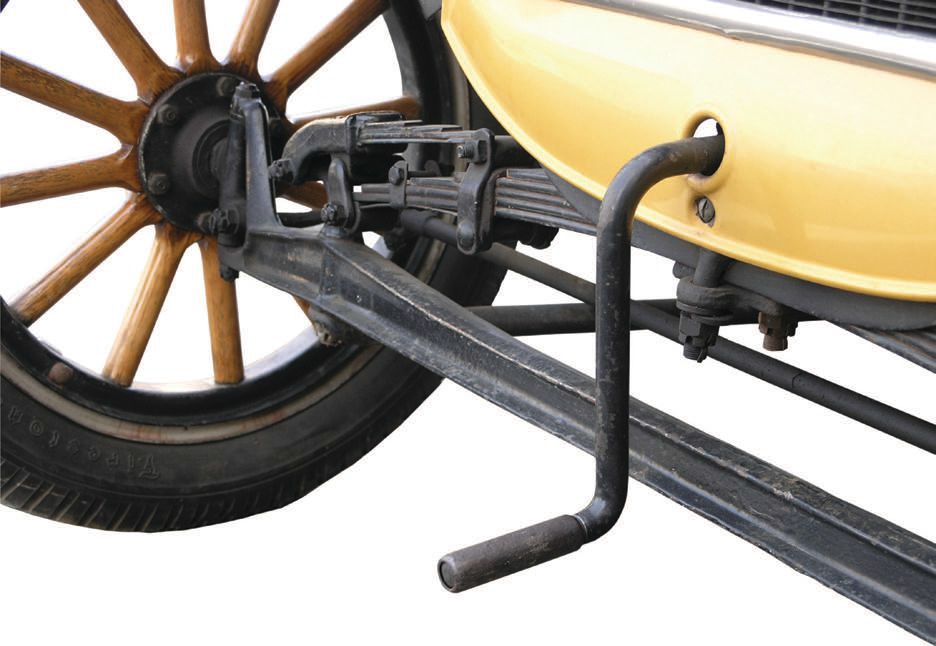Just getting started
Evan Zabawski | TLT From the Editor May 2012
Cashing in on one good idea leads to innovation.

The hand crank was simply included as emergency equipment in the event of a dead battery—for another 75 years!
www.canstockphoto.com
Most of us probably have never seen a car being started with a hand crank outside of a demonstration at an antique car show or museum, thanks to the invention of the electric starter. A series of curious incidents led to its development and initial adoption in the 1912 Cadillac.
Edward A. Deeds hired Charles F. Kettering to work at The National Cash Register Co., in Dayton, Ohio, in June 1904. During his five-year career there, Kettering invented the “OK Charge Phone,” which allowed quick approval of credit purchases, a low-cost printing cash register, an accounting machine and a high-torque electric motor that eliminated the hand crank on cash registers.
Deeds became interested in the emerging automobile industry and built an experimental automobile on his own time, but heavy competition changed his focus to improved automotive components. Deeds asked Kettering to moonlight on this venture, which eventually grew large enough that he resigned from NCR.
Earl Howard, a former NCR associate who now worked for the Cadillac Motor Car Co. of Detroit as assistant sales manager, suggested they improve the automobile-ignition system. At that time, the Cadillacs used a magneto system, and Kettering developed the breaker point system consisting of a high-tension coil, condenser and breaker points, which was used for the next 70 years. The first order of 8,000 ignition sets, used on the 1910 model year Cadillac, prompted the formation of the Dayton Engineering Laboratories Co. (later Delco).
In December 1910, a woman stalled her Cadillac while driving through Belle Isle Park in Detroit, and a passerby stopped to help by cranking the motor for her. Since the spark had not been retarded when he turned the crank, the motor backfired and the crank broke his arm and smashed his jaw. A few minutes later, another Cadillac pulled up, containing Cadillac engineers Ernest Sweet and Bill Foltz. They helped the woman start her car and took the injured man to the hospital. Though the injuries did not seem severe, he later died in the hospital of pneumonia. When the engineers reported the incident to Cadillac founder Henry Leland and his son Wilfred, Henry proclaimed that his cars would never again inflict such harm and set his engineers to the task.
After much work, Sweet eventually reported to Wilfred Leland that the principles had been worked out and that Cadillac cars could be equipped with good self-starters. Wilfred Leland then asked Earl Howard to come up with a new sales pitch since the engineering department had developed an electric-starting device that would do away with hand cranks. He added that the only issue was it was too big to fit under the hood.
Earl Howard recalled the small electric motor Kettering had designed to eliminate the crank on cash registers and suggested Wilfred contact him. Wilfred immediately went to the phone and urged Kettering to come to Detroit. After showing him the starting device, Kettering agreed to develop the smaller motor. He was able to use his earlier devised motor and over-running clutch, which engaged the cash register mechanism and released it at just the right time.
On Feb. 27, 1911, Kettering’s motor was coupled with the Cadillac starter in front of a group of the engineers who had a hand in its creation. When they threw the switch, the motor throbbed to life to everyone’s great satisfaction. Since this ignition system required a battery, Kettering suggested a further development: remove the acetylene tank and give the car electric headlights. Sweet would visit Dayton many times before completion of the luxurious 1912 Cadillac, which proved to be a commercial coup as sales spiked 40% over the previous year.
After Kettering’s invention became a standard feature, the hand crank was simply included as emergency equipment in the event of a dead battery—for another 75 years!
 Evan Zabawski, CLS, is the senior reliability specialist for Fluid Life in Edmonton, Alberta, Canada. You can reach him at evan@fluidlife.com
Evan Zabawski, CLS, is the senior reliability specialist for Fluid Life in Edmonton, Alberta, Canada. You can reach him at evan@fluidlife.com.